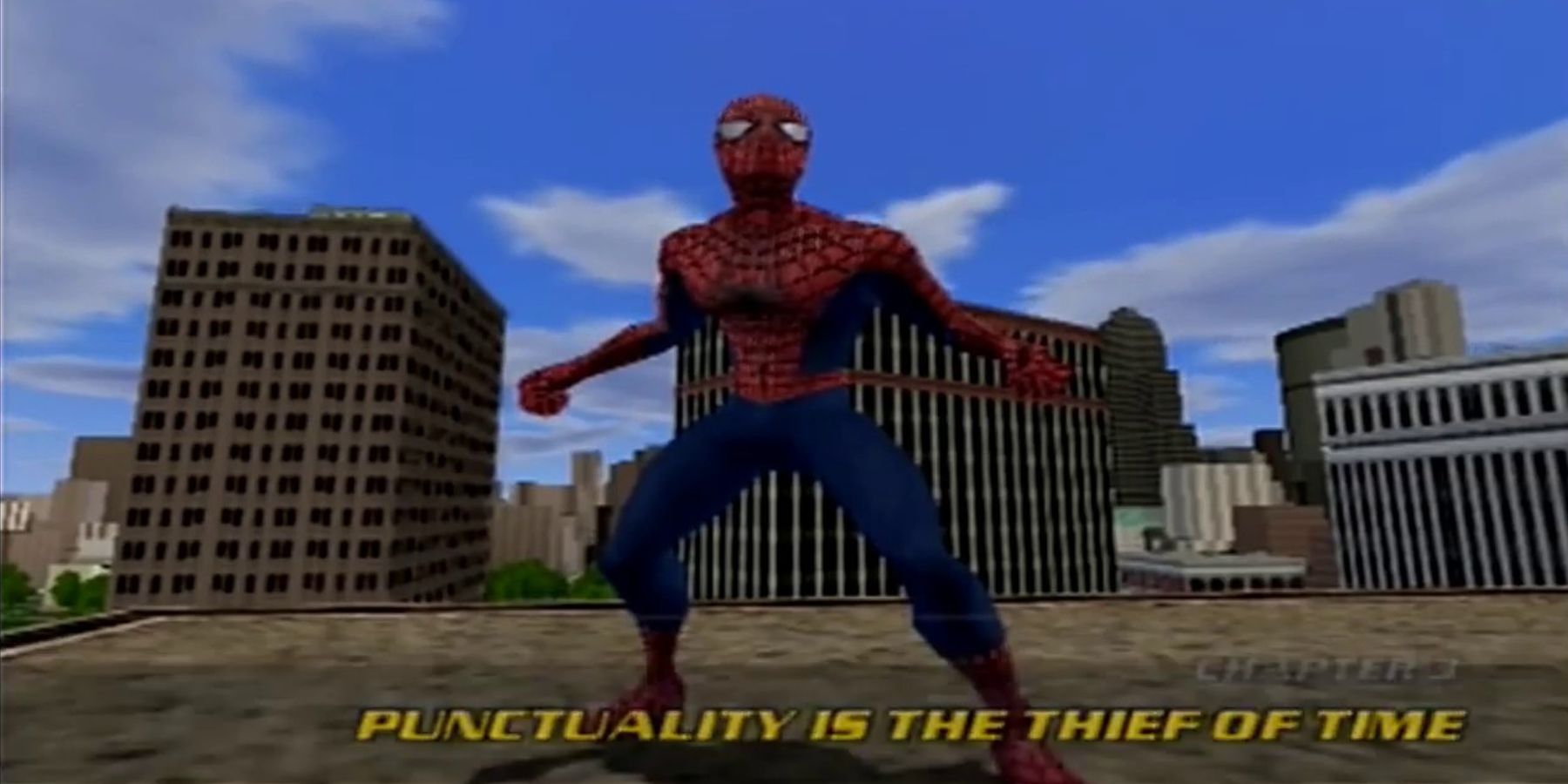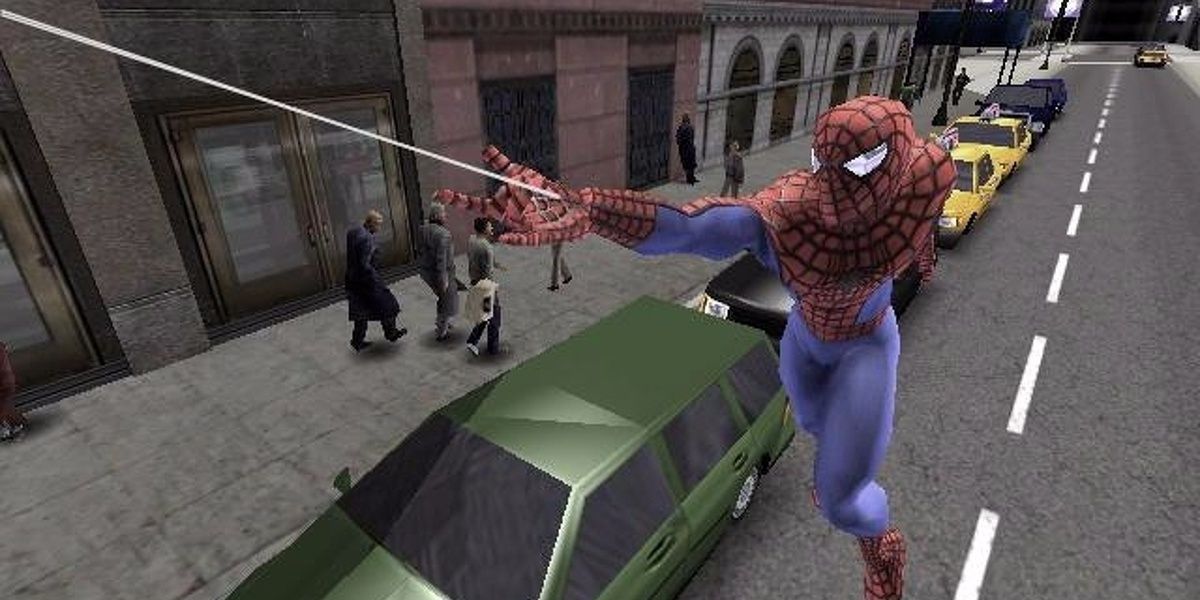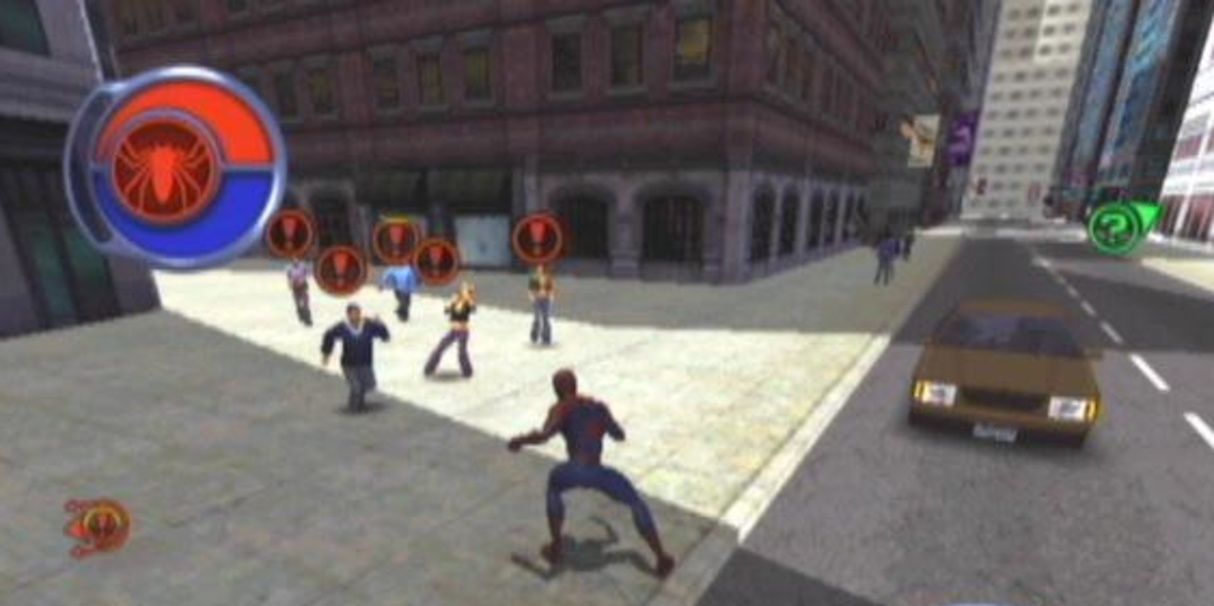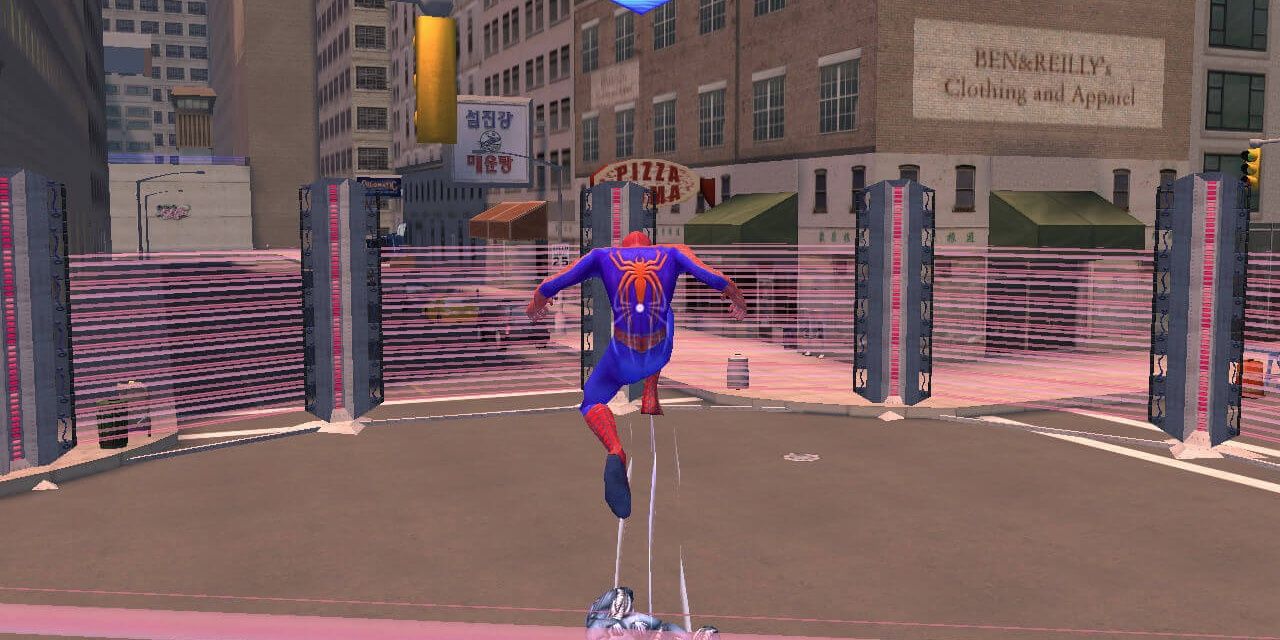A game that likely evokes a nostalgic overload for many, Spider-Man 2 thwipped onto PlayStation 2, Xbox, and GameCube in 2004, coinciding with the release of its movie counterpart. A relic of a bygone era of licensed tie-in video game adaptations, Spider-Man 2, at least the home console version, is still regarded by many as an excellent superhero game, even when compared to 2019's Marvel's Spider-Man by Insomniac Games. In fact, some long-time fans even believe that Spider-Man 2 has superior web-swinging mechanics than the most recent Spidey venture.
Stripping away the comparisons to contemporary releases, Spider-Man 2 does definitely hold up today. There are several key aspects of the game that make it stand out as one of, if not the, best superhero game of all time.
Thwipping Never Felt So Good
If there's one mechanic a Spider-Man developer needs to get right it's the web-swinging. In Insomniac's Spider-Man, Spidey uses a relatively simple pendulum-like mechanic to give the feeling of forward momentum; when players hold the trigger to extend a web, Spidey enters a downward arc and if players release at the top of the pendulum arc, Spidey is propelled out, gaining speed. This version of web-swinging is extremely user-friendly, only requiring a single button input to make Spidey move. Insomniac's version also allows players to attach and run across walls and parkour across rooftops by just holding down the same trigger that sends out a web. There's also a lack of fall damage, meaning that there are essentially no consequences for a mistimed swing.
On the other hand, Spider-Man 2's home console version used a physics-based swinging system. Here, momentum really is key. Players needed to time their web releases well in order to gain speed and end up in the direction they wanted. A combination of triggers, analog sticks, and face buttons were needed to ensure that Spidey didn't launch himself into the ground. Similarly, attaching to walls and wall-running was a more complex task that also required several button combinations. Also, fall damage was present, so any significant wrong move could be the end of the web-head.
While the more complex controls and more punishing consequences could be a bit of a turn-off for modern players, the sense of satisfaction that came from understanding and adapting to these mechanics made the journey through Spider-Man 2 an incredibly memorable one. This is further reinforced with the game's numerous web-swinging upgrades that gave Spidey more speed, more tricks, and a boost mechanic. These upgrades imitate and reinforce the player's feelings that they are learning and becoming a better Spider-Man, a theme and feeling that should be core to any superhero game.
A Surprising Predecessor
When Spider-Man 2 is brought up in conversation nowadays, the topic almost always reverts back to how good the swinging was. But there's a lot more to this game than most give credit to, and there's a surprising amount of groundwork present in Spider-Man 2 that Insomniac likely used for its iteration.
The combat in Spider-Man 2 is a little finicky and clunky, but it had some excellent ideas that just needed some more time and polish, polish that would later be given in Insomniac's game. On the surface, the game uses a general brawler type of combat; the face buttons give you light attacks, heavy attacks, web attacks, jumps, and dodges. But it's the way these inputs and mechanics are strung together that make Spider-Man 2 a surprisingly engaging action game.
Over the course of the campaign, players will unlock a range of web attacks and combo moves. Stringing these uniquely Spider-Man moves together makes for exciting and visually-impressive fights. Players will be throwing enemies into the air, webbing them back down again, flipping over foes, and tying criminals to lampposts, all while dishing out a few gymnastic kicks and punches along the way and using their Spidey Sense to dodge incoming gunshots. When all of these inputs and actions combine, they help to make the player truly feel like the wall-crawler. The game's slight emphasis on aerial combat is also quite interesting, as Insomniac has since made that Spider-Man's key selling point, setting it apart from the Arkham series of games.
Another area in which Spider-Man 2 laid the groundwork for future iterations was in its decent selection of villains. Spider-Man's rogues gallery is vast, and everyone has their own personal favorite, but Spider-Man 2 had a handful that definitely impressed fans at the time. Over the course of the game's story, players will come up against Doc Ock, Rhino, Mysterio (many, many times), and Shocker. A deep-cut villain, Calypso, can also be fought in the game's challenge mode.
While most of the boss fights themselves may have left a little to be desired, with many boiling down to a punch-up in a warehouse/large room, the sheer presence of these iconic comic characters was enough to give fans a thrill, especially with most of their portrayals appearing just as cheesy and over-the-top as their on-page counterparts.
Pizza Time
The subheading says it all. While many players remember Spider-Man 2 fondly for its aforementioned web-swinging, its unique combat mechanics and its range of iconic Marvel villains, there's a handful that thinks about one particular minigame whenever the game is mentioned: the pizza delivery minigame.
The premise is simple, Spider-Man must deliver pizzas to customers across New York in a specified amount of time. The hook, however, is the absurdity that follows. From the moment players exit the cutscene, Luigi Denza's 1880 classic "Funiculi, Funicula" begins to play, but it's a weird midi-like, low-res version that uses the fakest accordion sound effects ever made. The absurdity only continues as the clock begins to run out, causing the classical accordion music to speed up. And acting as a perfect absurd footnote to the whole situation, whenever you accidentally fall or perform an air-trick, Tobey Maguire's monotone voice exclaims "If I flip these pizzas, Mr. Aziz will flip out." This is peak game design and might be the greatest reason for Spider-Man 2's success.
All joking aside, Spider-Man 2 was the first true superhero game to deliver on the promise of making the player feel as though they are the titular hero, whether that was through web-swinging, combat mechanics, absurdly memorable minigames, or any other component.
Spider-Man 2 is available on DS, GBA, GameCube, PC, PS2, PSP, and Xbox.




